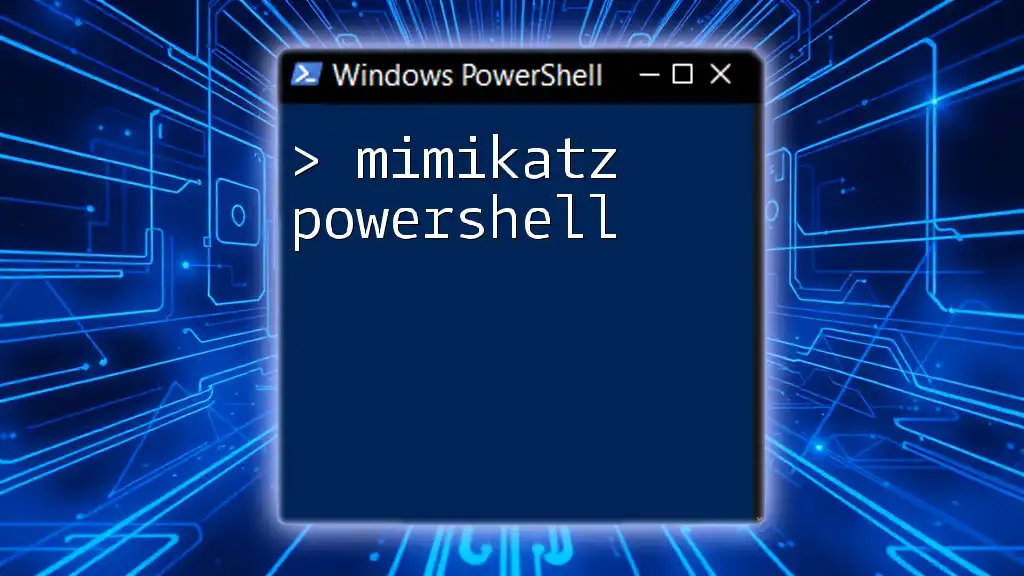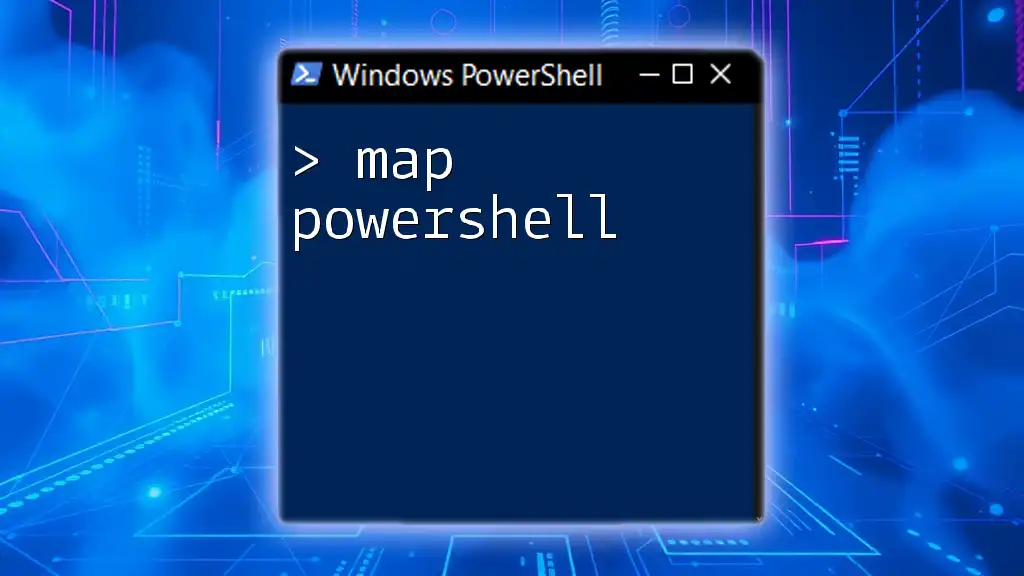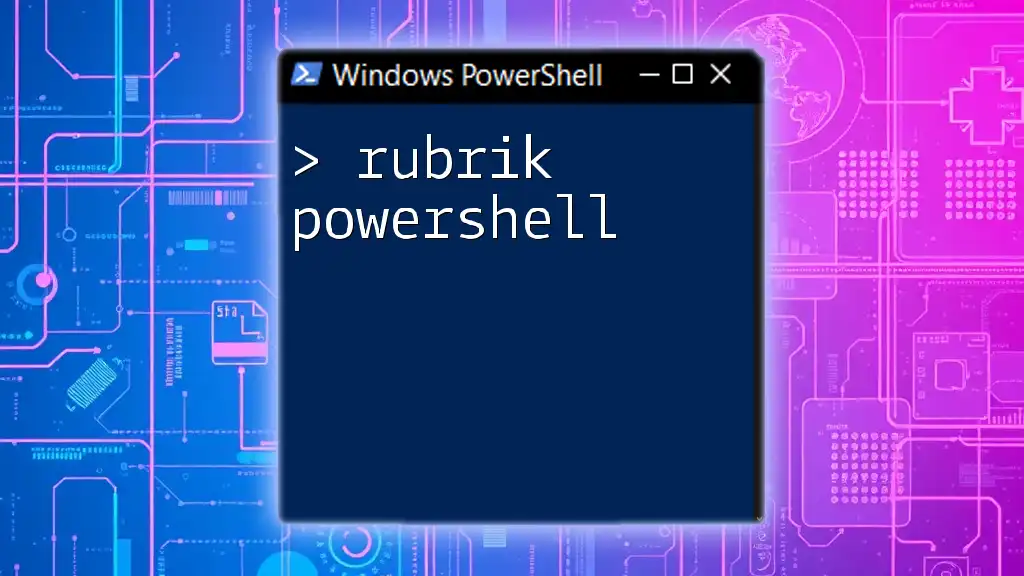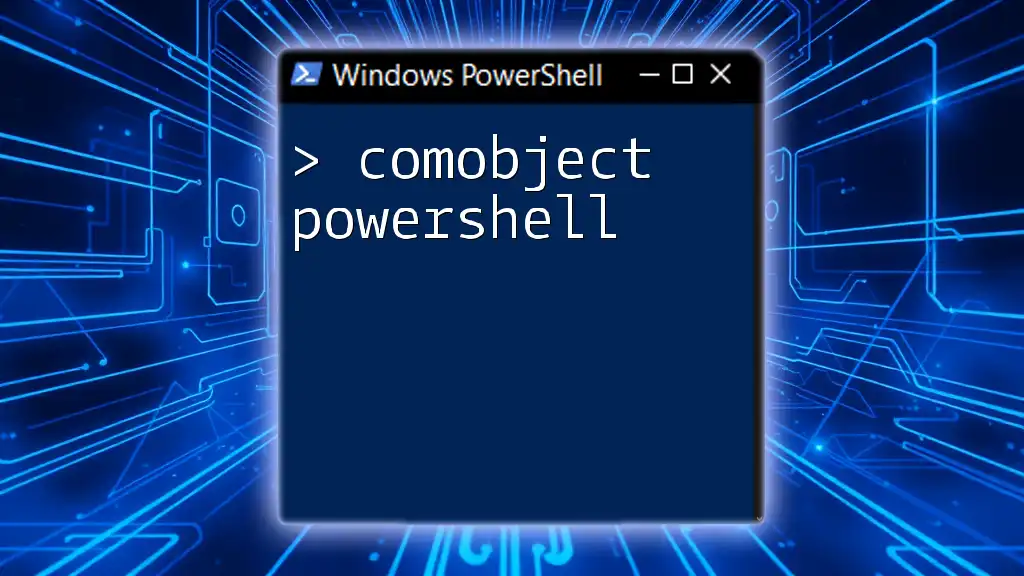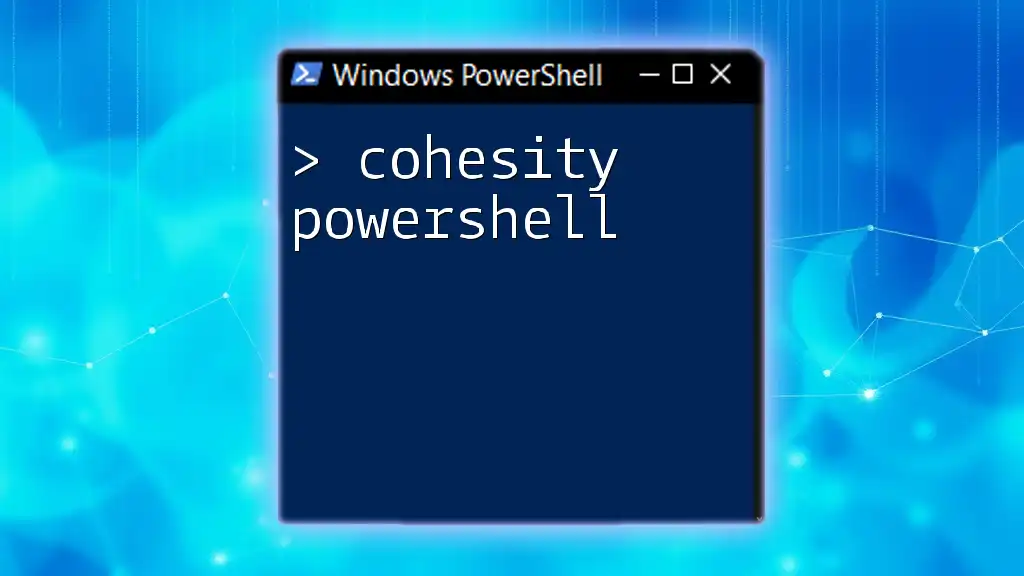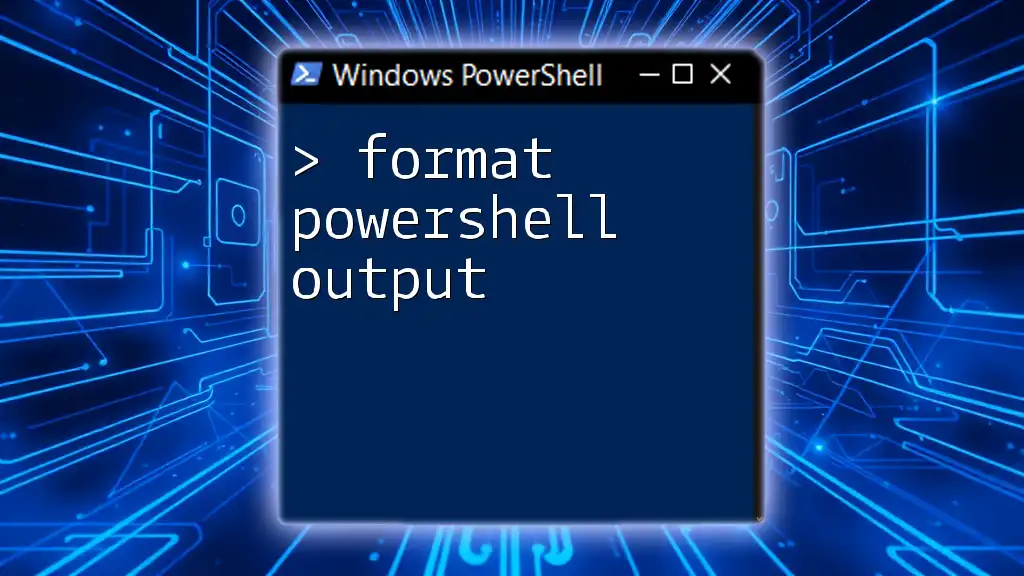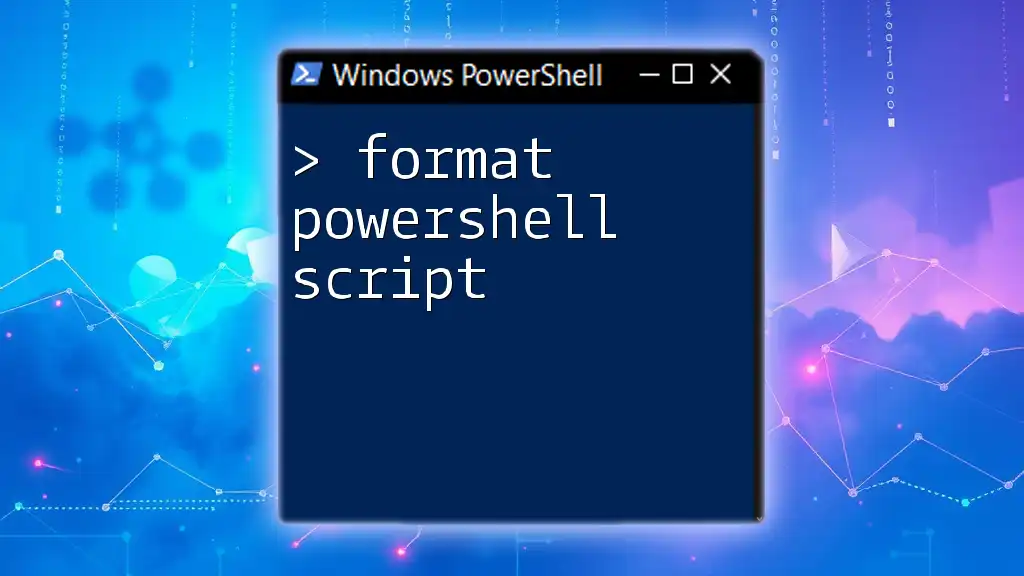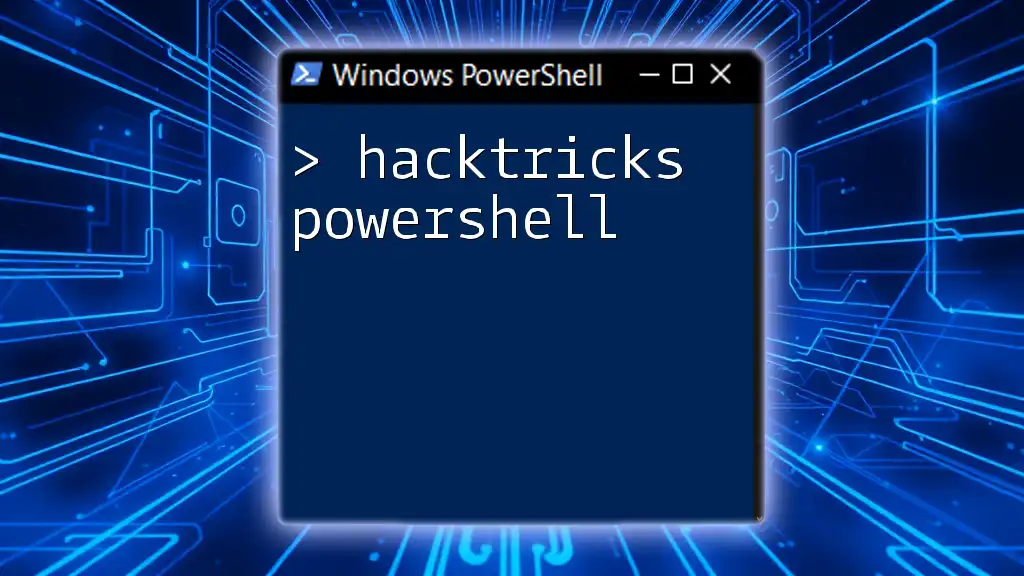Mimikatz is a powerful tool used in cybersecurity to extract plaintext passwords, hashes, and Kerberos tickets from memory, and the following PowerShell command demonstrates how to execute the Mimikatz script to extract credentials:
Invoke-Mimikatz -Command "'sekurlsa::minidump C:\path\to\dmpfile.dmp; sekurlsa::sekurlsa'"
Understanding Mimikatz
What is Mimikatz?
Mimikatz is an open-source tool created by Benjamin Delpy that has become a staple in cybersecurity testing. Originally developed to demonstrate the security vulnerabilities in the way Windows handles authentication, it allows for the extraction of plaintext passwords, hashes, Kerberos tickets, and other sensitive information from memory.
Key Features of Mimikatz include:
- Credential extraction: Recovering usernames and passwords stored in memory.
- Ticket manipulation: Modifying and injecting Kerberos tickets for authentication.
- Credential dumping: Extracting stored user credentials from the Security Accounts Manager (SAM) database and Active Directory.
How Mimikatz Works
Mimikatz takes advantage of Windows' authentication techniques and APIs, such as Local Security Authority (LSA) and Security Support Provider Interface (SSPI). This enables it to manipulate authentication tickets and extract user credentials. The key components of Mimikatz typically include:
- DLLs: Shared libraries containing the necessary functions for process manipulation.
- Commands: Structured queries, each with unique functions for gathering or manipulating data.
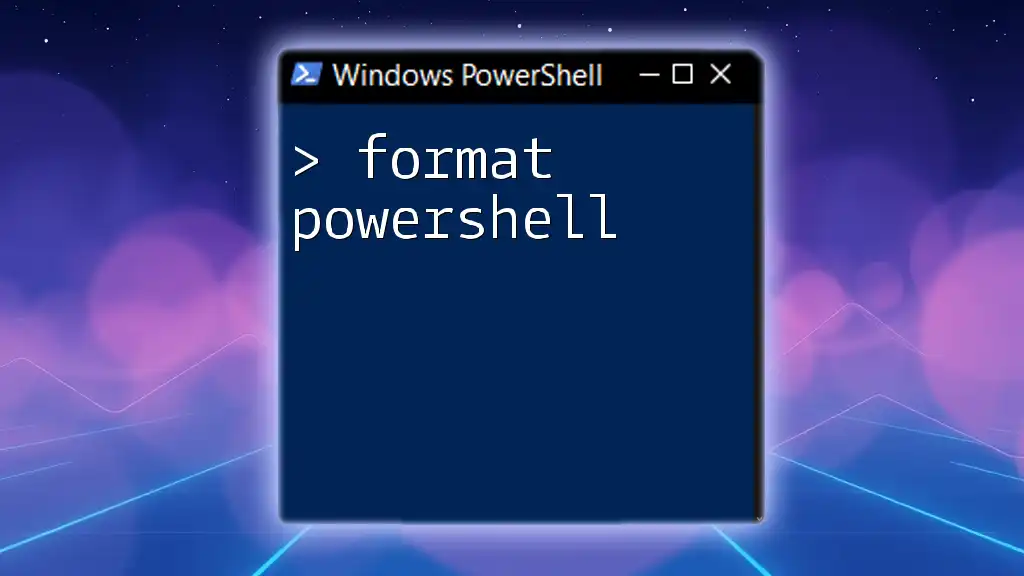
Installing Mimikatz for PowerShell
Prerequisites
System Requirements: Mimikatz operates primarily on Windows environments. While it can target any version of Windows, compatibility with specific OS architectures may vary.
Security Considerations: It is imperative to use Mimikatz responsibly and ethically, ensuring that you have appropriate permissions and a legitimate purpose, such as penetration testing in an authorized environment.
Downloading Mimikatz
To download Mimikatz, you can find it on the official GitHub repository. Always ensure you are obtaining software from a trustworthy source to avoid malware or backdoors.
Verifying Integrity: After downloading, check the file's integrity through checksum verification. This ensures that the file has not been tampered with.
Running Mimikatz via PowerShell
To run Mimikatz within PowerShell, you’ll need to execute PowerShell with elevated permissions. This can be done using the following command:
Start-Process powershell -Verb runAs
Once in the elevated session, you can import Mimikatz.
. .\mimikatz.ps1
This command effectively loads the Mimikatz module into your PowerShell session, making all of its functions available for use.

Using Mimikatz with PowerShell
Credential Dumping
Credential dumping is the process of extracting passwords and other authentication tokens from a system. This is crucial for understanding vulnerabilities within a network.
PowerShell Commands for Credential Dumping are fairly straightforward. For instance, to extract credentials from memory, you can use:
Invoke-Mimikatz -Command "sekurlsa::logonpasswords"
This command accesses the memory where credentials are stored, returning related data, including usernames and passwords in plaintext.
Pass-the-Hash Attacks
What is Pass-the-Hash? This technique exploits Windows authentication by using a hashed password instead of the plaintext, bypassing the need for the actual password. This allows an attacker to authenticate as a user without knowing their password.
To execute a Pass-the-Hash attack using PowerShell, you can run:
Invoke-Mimikatz -Command "sekurlsa::pth /user:username /domain:domain /hash:NTLM_HASH"
This command allows you to authenticate as a target user by providing the username, domain, and corresponding NTLM hash.
Kerberos Ticket Manipulation
Kerberos is a widely used authentication protocol, critical for network security. Understanding Kerberos Tickets is essential for effectively using Mimikatz.
To request and use a Ticket Granting Ticket (TGT), you would use:
Invoke-Mimikatz -Command "kerberos::ptt ticket.kirbi"
This command allows Mimikatz to inject a Kerberos ticket into the current session, enabling unauthorized access to systems that rely on Kerberos for authentication.

Best Practices for Ethical Usage
Ethical Considerations
Using Mimikatz carries hefty legal ramifications. It's vital to understand the laws surrounding cybersecurity in your jurisdiction, as unauthorized use can lead to severe consequences, including criminal charges.
Using Mimikatz Responsibly
To prevent unethical actions, only use Mimikatz in environments where you have explicit permission to test security measures. This ethical approach ensures you contribute positively to cybersecurity by helping organizations identify and resolve vulnerabilities.
Mitigation Strategies
Organizations should adopt strong preventative measures to defend against potential exploitation through Mimikatz. Some best practices include:
- Implementing strong password policies and multi-factor authentication (MFA).
- Regularly updating and patching systems to protect against known vulnerabilities.
Monitoring & Detection: Employ robust monitoring tools that can track unusual authentication behaviors, alerting security teams to potential misuse of Mimikatz or similar tools.

Conclusion
Understanding Mimikatz PowerShell is essential for anyone involved in cybersecurity, be it ethical hackers, pen testers, or system administrators. By responsibly applying the knowledge gained here, you can enhance your skills while contributing to improved security practices within your organization.
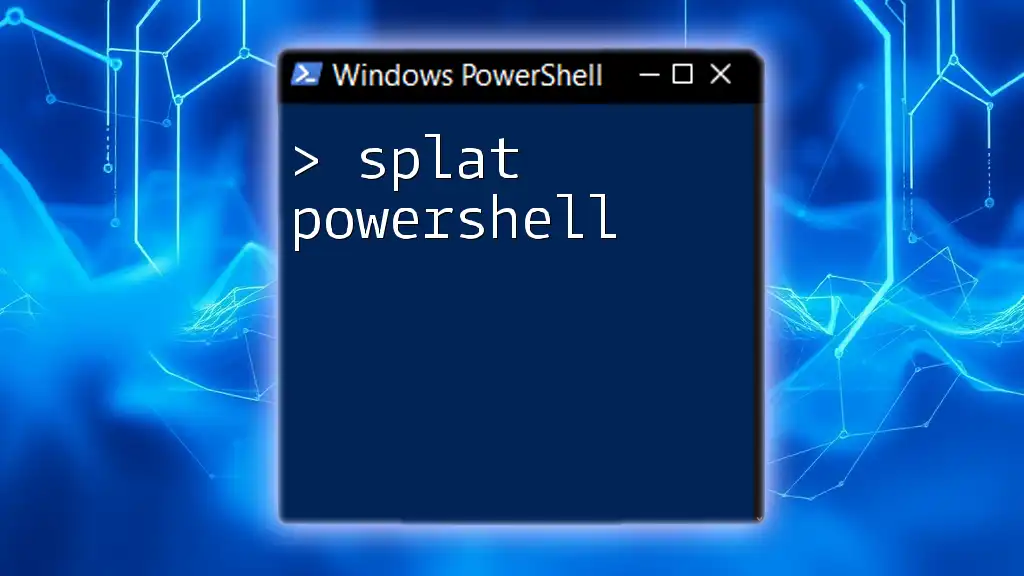
FAQs
Common Questions:
-
What is the difference between Mimikatz and other credential dumping tools?
Mimikatz is particularly versatile, offering a range of functionalities beyond simple credential extraction, such as Kerberos ticket manipulation. -
How can I secure my network against Mimikatz?
Employ strong authentication methods, embrace least privilege principles, and conduct regular security assessments. -
Are there alternatives to Mimikatz for PowerShell users?
Yes, several tools can perform similar functions, including PowerSploit and Inveigh, among others.
Recommended Tools and Resources
For further learning and tools, consider visiting reputable cybersecurity blogs like Krebs on Security or the SANS Institute, where professionals frequently share insights and updates on tools like Mimikatz.

